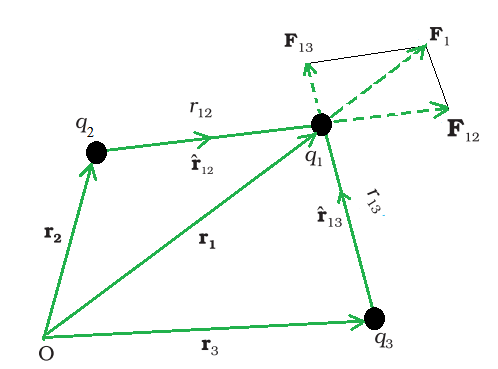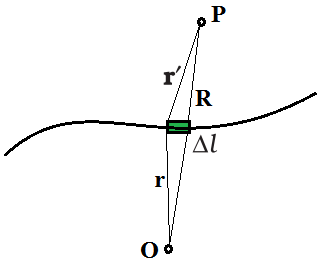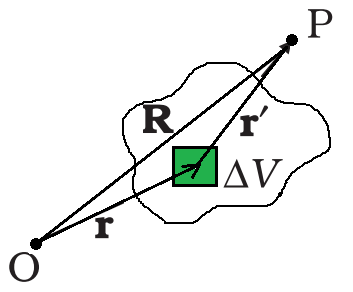叠加原理与连续电荷分布
电荷是物质的基本特征,它调节基本粒子如何受到电场或磁场的影响。正负电荷存在于离散的自然单元中,不能制造或破坏。有两种电荷:正电荷和负电荷。当一种电荷过多的两个项目彼此相对接近时,它们会相互排斥。当两个带有过多相反电荷的东西,一个带正电,另一个带负电,靠近时,它们会相互吸引。
电荷是许多基本或亚原子物质粒子共有的属性。例如,电子带负电荷,而质子带正电荷。另一方面,中子不带电荷。实验发现,每个电子的负电荷与每个质子的正电荷大小相同。电荷以自然单位测量,相当于电子或质子的电荷,这是一个基本的物理常数。
叠加原理
叠加原理允许我们确定任意数量的点电荷施加在给定电荷上的总力。宇宙中的每一个带电粒子都会在周围空间中产生一个电场。电荷产生的电场不受额外电荷存在与否的影响。库仑定律可用于计算产生的电场。叠加原理允许组合两个或多个电场。
According to the concept of superposition, every charge in space forms an electric field at a place irrespective of the presence of other charges in that medium. The resulting electric field is a vector sum of the constituent charges’ electric fields.
使用叠加概念计算系统的净通量、净场和净势能。
用于计算多个电荷之间力的静电叠加原理
考虑一个真空系统,n 静止不动,电荷为 q 1 、q 2和 q 3 。实验证明,一个电荷上由于许多其他电荷而产生的所有力的矢量和,一次取一个,是该电荷上由于其他电荷而产生的所有力的矢量和。由于存在其他费用,单独的部队不受影响。这被称为叠加原理。

三费制度。
The force on one charge, say q1, due to two other charges, q2 and q3, may be determined By conducting a vector addition of the forces due to each of these charges. As a result, if F12 denotes the force exerted on q1 as a result of q2,
Similarly, F13 denotes the force exerted on q1 as a result of q3, which again is the Coulomb force on q1 due to q3 even though another charge q2 is present.
Thus, the total force F1 on q1 due to the two charges q2 and q3 can be expressed as,
where
and
are the unit vectors along the direction of q1 and q2.
- ∈o is the permittivity constant for the medium in which the charges are placed in.
- r12 and r13 are the distances between the charges.
连续电荷分布
处理离散电荷组合涉及 q1、q2、…、qn。数学处理更容易,不需要微积分,这也是我们将自己局限于离散电荷的原因之一。然而,由于许多原因,使用离散电荷是不切实际的,我们必须改为使用连续电荷分布。在连续电荷分布中,所有电荷紧密结合在一起,它们之间的空间很小。
费用可以通过三种方式分配,包括:
- 线性电荷分布
- 表面电荷分布
- 体积电荷分布
线性电荷密度

线性电荷密度
当电荷沿长度均匀分布时,例如围绕圆的圆周或沿直线,这称为线性电荷分布。线性电荷分布由符号 λ 表示。导线的线电荷密度 λ 定义为
其中,Δl 在宏观尺度上是线的一个小线元,但它包含大量微观带电元素,而 ΔQ 是该线元中包含的电荷。 λ 的单位是 C/m。
表面电荷密度

表面电荷密度
根据微小带电元素的位置来表征带电导体表面的电荷分布是不切实际的。更实际的是考虑导体表面上的面积元素 S(在宏观尺度上很小,但大到足以包含许多电子)并指定该元素上的电荷 Q。面元处的表面电荷密度 σ
![]()
表面电荷密度 σ 是一个连续函数。所述的表面电荷密度忽略了微观水平上的电荷量化和电荷分布不连续性。 ,它是一个区域元素 ΔS 上微观电荷密度的平滑平均值,它在微观上很大但在宏观上很小,反映了宏观的表面电荷密度。表面电荷密度σ的单位是C/m 2 。
体电荷密度

体电荷密度
类似地,当电荷均匀地分布在一个体积上时,它被称为体积电荷分布 ρ,例如在球体或圆柱体内。定义了体积电荷密度 ρ(也称为电荷密度)。
![]()
其中 ΔQ 表示宏观小体积元素 ΔV 中的电荷,其中包含大量微观带电成分。体电荷密度ρ的单位是C/m 3 。
库仑定律
库仑定律是描述两个点电荷之间的力的数学公式。当带电体的尺寸远小于它们之间的间距时,则不考虑或忽略尺寸。带电体可以被认为是点电荷。
According to Coulomb’s law, the force of attraction or repulsion between two charged things is directly proportional to the product of their charges and inversely proportional to the square of the distance between them. It acts along the line that connects the two charges that are regarded to be point charges.
库仑研究了两个点电荷之间的力,发现它与它们之间距离的平方成反比,与它们大小的乘积成正比,并且作用在连接它们的直线上。
在真空中相隔距离 r 的两个点电荷 q1 和 q2 之间的力 (F) 的大小由下式给出:
- F ∝ q 1 q 2和
- F ∝ 1/r 2
所以,
F ∝ q 1 q 2 / r 2
要么
F = kq 1 q 2 / r 2
其中 k 是比例常数,等于 1/4πε 0 。
符号 ε 0称为 epsilon not,它表示真空的介电常数。
k 的值为 9 × 10 9 Nm 2 / C 2 。 ε 0的SI单位值为8.854×10 -12 C 2 N -1 m -2 。
示例问题
问题 1:内半径 r 和外半径 R 的圆环具有均匀的电荷密度 a。环上的总费用是多少?
解决方案:
The total surface area of the annulus is π×(R2-r2)
It has an outer radius R and an inner radius r.
The surface charge density is the amount of charge stored on the unit surface area.
The surface charge density is a.
Therefore, total charge on the annulus is π×a×(R2– r2).
问题2:线电荷密度的量纲是多少?
解决方案:
The expression for the Linear charge density λ=(Amount of charge / Total length).
The dimension of electric charge is [I T] and the dimension of length is [L].
Therefore, the dimension of linear-charge-density = [I T L-1].
问题 3:电荷在空间中沿无限曲线分布,电荷分布为 λ。与直线保持一定距离的点电荷 q 所受的力是多少?
解决方案:
Let the point charge is situated at a distance r from a small part dl on the line.
The charge stored in stat small part is λ.dl.
The force due to that small part will be directed towards the unit vector .
Therefore, force on that charge due to the entire linear charge distribution can be written as:
![]()
问题 4:半径为 1 m 的固体非导电球体带有 10 C 的总电荷,该电荷均匀分布在整个球体中。确定球体的电荷密度。
解决方案:
The volume of the sphere = (4/3)πr3.
where r is the radius of the sphere.
Therefore, the charge density, ρ= total charge/[(4/3)πr3].
Now substituting the values,
ρ = 10/[(4/3)πr3]
= 2.38 C/m3.
But if the sphere is conducting, we have to consider the surface charge density.
问题5:什么是线性电荷分布?
解决方案:
When charges are dispersed equally along a length, such as around the circumference of a circle or along a straight wire, this is known as linear charge distribution. The linear charge distribution is symbolized by the symbol λ. The linear charge density λ of a wire is defined by
where, ∆l is on the macroscopic scale, a small line element of wire, yet it contains a significant number of microscopic charged elements and ∆Q is the charge contained in that line element.
The units for λ are C/m.